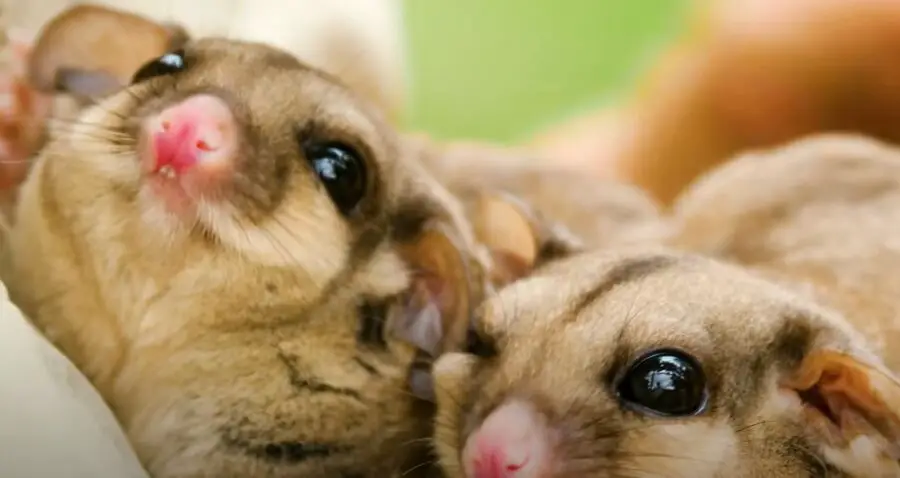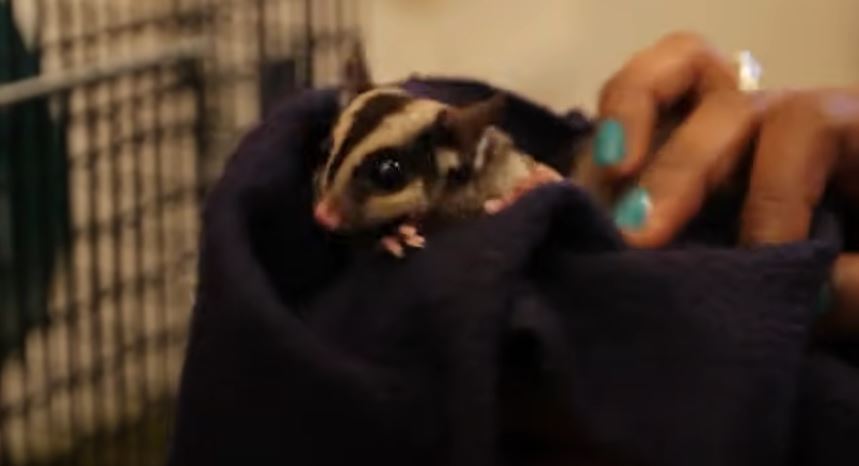I don’t use a heat lamp for my sugar glider, but my brother keeps telling me we should get one. Do sugar gliders need a heat lamp?
This article aims to provide evidence for and against heat lamps for sugar gliders to leave the ultimate decision up to you.
Do Sugar Gliders Need a Heat Lamp?
It is not entirely necessary for sugar gliders to use a heat lamp. Animals that come from warm climates and are not well adjusted to cold weather. However, a heating lamp can make them overheat and lead to additional health problems.
As long as the environment is heated enough for their comfort, you don’t need to resort to buying a separate heating lamp and putting it in their cage.
Heat rocks, pads and pouches or a well regulated thermostat is enough for a sugar glider who can be comfortable in temperatures between 75 to 80°F. Sugar Gliders can also tolerate temperatures at 60°F – 90°F (15°C – 32°C).

Are Sugar Gliders Sensitive?
Sugar gliders are marsupials that are nocturnal and native to tropical weather climates. They are sapsuckers meaning that they use their tongues and teeth to extract sugary sap from the bark of trees.
This is how they get the first part of their name. The second part is due to the way they can glide through the air and use their tail as a parachute.
Sugar gliders are very sensitive to the changes in temperature. They prefer warmer climates or indoor settings between 75 to 80°F. They’re also sensitive to their environment and would benefit from an area that has enough activities such as climbing toys and chew toys.
We also require this area to be quiet and free from distractions such as high traffic areas where children or pets are running around.
I wanted to know why do sugar gliders suddenly die to help anyone in need of prevention tips. Please check it out.
How Heat Lamps Help Sugar Gliders
- Sugar gliders are mostly nocturnal and a heat lamp would keep them warm at night when temperatures dip.
- Heat lamps are able to give sugar gliders UVB rays that keeps them healthy.
- The heat give them more comfort and security.
- Younger joeys can benefit more from heat lamps as they have a harder time regulating their body temperature.
- If you noticed that your sugar glider is shivering too much, you can introduce the heat lamp, heat pouch or heat rocks.
Do heat lamps help with digestion? This is explained here.
How Heat Lamps Hurt Sugar Gliders
- Sometimes heat lamps are not essential and can lead to disruptions in the sleep cycle of your little pocket pet.
- A sugar glider needs a dark environment at night and the heat lamp provides a light source that can lead to increased fatigue in the mornings.
- They may have higher levels of fear and anxiety from this infrared heat and light.
- The environment should be dimly lit because this is how they enjoy their natural habitat.
- Heat lamps can also make the environment in their cage too hot leading to other health issues such as respiratory problems.

How to Warm Your Sugar Glider Without a Heat Lamp
First and foremost, are you a warm person? Do you like setting your thermostat to a higher setting or do you like it cooler than the average person?
Keep in mind that sugar gliders would benefit from temperatures set at 75 to 80°F. If this is too high for your thermostat or your comfort, you can create other ways for your sugar glider to be warm.
Here are some examples:
- Add fleece or cotton bedding.
- Give them soft materials to nest and burrow.
- Place the cage away from vents, windows, hallways or drafty areas.
- Consider a heating pouch, pad or heat rocks.
When Is It Too Cold for a Sugar Glider?
Even though sugar gliders are able to tolerate temperatures ranging from 60°F – 90°F (15°C – 32°C). An ideal temperature would probably be at a higher setting around 24-27°C (75-80°F).
Anything under 70°F or 20°C would be considered too cold for a sugar glider to consistently try and stay warm.
They may become lethargic or torpid during this time and refuse to eat or interact with you. You might also see your sugar glider shivering more often.
Do Sugar Gliders Need Light?
Sugar gliders are known to be nocturnal and would not benefit from any excess lights. They would much rather enjoy their indoor environment to mimic their natural habitats that are more dimly lit.
Excessive exposure to UV light can damage their eyes, create more anxiety and fear. Daytime lighting that appears from windows or other areas is acceptable as long as sunlight isn’t directly shining on their cage.
Make sure that all lights are turned off for them at night. Allow them to enjoy this time for their own relaxation away from lights that are not beneficial for nocturnal creature such as sugar gliders.

Sugar Glider Facts:
- Weight as adults: 120-160 gm with females smaller than males
- Body length: around 12.7 cm (5 inches)
- Length including tail: around 28 cm (11 inches)
- Lifespan in captivity: 12-14 years
- Body temperature: avg. 32°C (89.6°F)
- Heart rate: 200-300 beats per minute
- Respiratory rate: 16-40 breaths per minute
- Sexual maturity: Females = 8-12 months, Males 12-14 months
- Estrous cycle: 29 days. Able to breed all year in captivity
- Mating: Usually in the evening
- Gestation: 16 days. Fetus gets migrated to the female’s pouch
- Litter size: 1 joey (19%) 2 joeys (89%)
Best Housing Enclosures for Sugar Gliders
- Sugar gliders need enough space to jump, run, climb and possibly glide as well.
- An aviary type wire cage would be the most suitable.
- There should be no spacing in the wires that are larger than 2.5×1.3 cm (1×0.5 in).
- Zinc wire is toxic if they lick or consume it.
- Place a sleeping pouch high up in the cage.
- Sugar gliders also benefit from bird toys, swings and chew toys.
- Temperatures should be set around 18.3-32.2°C (65-90°F) , but the ideal range is around 24-27°C (75-80°F).
- Keep them away from spaces where the temperature continues to fluctuate.
- Allow them a substrate where there is recycled paper, shredded paper, corn cob, anti-pilled fleece or cotton bedding.
- Allow them to be able to create a warm nest or burrow inside a nest box.
Thank you for visiting PocketPetCentral.com for the best information to help you enjoy the life of your pocket pet companion in a fun, safe & healthy way.


